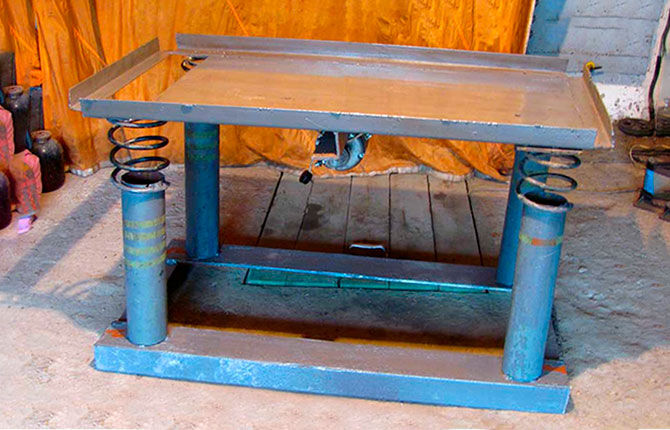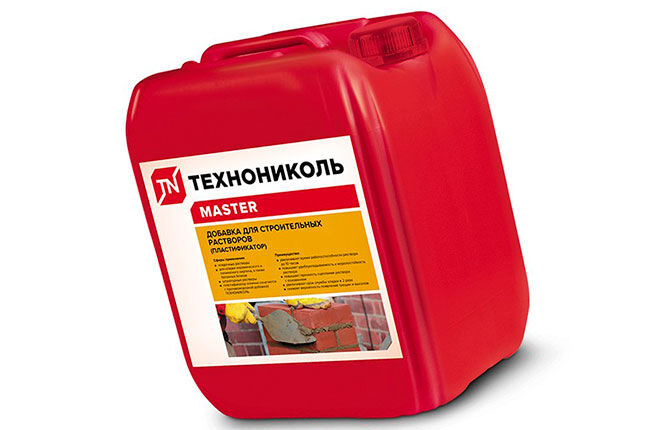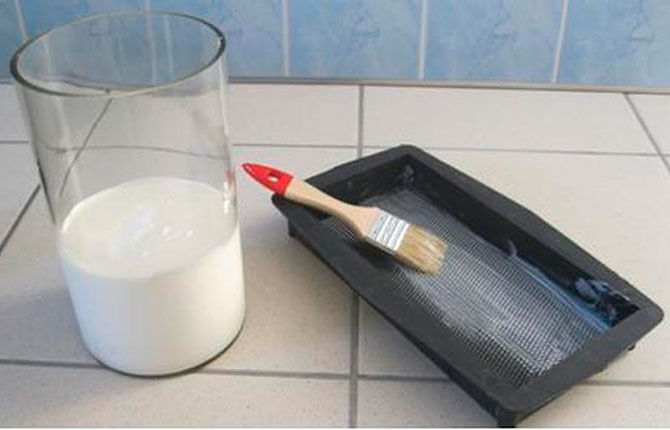How to make paving slabs with your own hands - manufacturing instructions
Paving slabs are used to make smooth surfaces that are resistant to mechanical damage and temperature changes. You can do it yourself.The work will be performed by a person with minimal technical skills. Before making paving slabs, you will need to prepare the necessary tools, materials and equipment.
The content of the article:
Factory technology
On a production scale, paving slabs are made in several ways. In this case, automated equipment is used. This makes it possible to produce large volumes of products in a short period of time.
- Vibropressed products
Tiles are made by pressing concrete mixture under high pressure. In this case, the amount of moisture in the solution is minimal. Pressing together with vibration has a positive effect on the strength characteristics of products.
The result is slabs that are resistant to mechanical damage and temperature changes. It will not be possible to make vibropressed tiles at home on your own. Production technology involves the use of specialized equipment.
- Vibrocast slabs
The technology involves pouring liquid concrete mixture into pre-prepared forms. After pouring, the mold is subjected to vibration. This allows you to make the mixture dense and remove air bubbles from it. The density of the finished product improves its strength characteristics.
You can make paving slabs using the vibration casting method at home.This will allow you to create unique design elements.
- Clinker panels
The technology involves the production of slabs followed by firing at high temperatures. In production, a solution containing clay is used.
You will not be able to make such paving slabs yourself. Production requires specialized equipment.
Equipment and supplies for work
Before producing paving slabs, you need to prepare tools and equipment. Their list is different and is determined by a person separately for each case. To work you will need:
- Forms. Buy ready-made products or make them yourself.
- Mixer. You can mix the concrete mixture by hand. This will increase production time.
- Paint brush. Used to apply lubricant to the inner surface of molds. To speed up the process, use a spray bottle.
- Water container.
- Spatula or mason's trowel. Necessary for putting the finished mixture into molds.
- Container for concrete.
- Sieve for sifting sand.
- Measuring container.
- Vibrating table.

When working, you should follow safety precautions. Use personal protective equipment (goggles, gloves, respirator, etc.). This will help avoid injury during work.
Necessary materials
To make paving slabs yourself using the vibratory casting method, use the following materials:
- cement;
- sand;
- a substance that plasticizes the concrete mixture;
- dye;
- fine crushed stone;
- motor or sunflower oil.
The strength of the finished product depends on the quality of the selected materials. To make paving slabs, use M500 cement. There are no special requirements for sand quality. Select bulk material with a minimum amount of coarse impurities.
To reduce voids in concrete, plasticizing agents are used. Manufacturers produce plasticizer in powder and liquid form. In the first case, the substance is added to the dry mixture. The liquid is poured into a mixer while mixing with water.

You can make the product colored by adding pigment to the solution. There are synthetic and natural dyes. Organic compositions are more expensive, so mineral or metallic dyes are more often used.
Organization of the work site
To speed up the production process, you should properly organize your workplace. All tools, materials and equipment should be located a short distance from each other. This way it will be possible to make a large amount of tiles without putting any physical effort into transporting them.
The manufacturing technology involves the use of equipment powered by an electrical network. For safety, they provide shelter for electrical equipment from precipitation. The workplace is located under a canopy or indoors. When using a finished structure, provide good ventilation.
The mixer is placed next to bulk materials. A container is installed at the point where the ready-mix concrete is dispensed. The vibrating table is placed next to the container for collecting the solution.
To harden the cement-sand mortar, the forms are placed on a workbench or rack. The workbench is located next to the vibrating table.
Molds for production
Manufacturers produce forms of various configurations. For unique design details, templates make it yourself. To make a mold for paving slabs, proceed as follows:
- Select material. The template can be made from metal, wood, gypsum mixture or polymers.
- Prepare a drawing. At this stage, a detailed drawing is made. It includes the pattern and dimensions of the template. During production, adhere to the drawing.
- Prepare the details. For forms made of gypsum and polymers, an impression is used. Metal or wooden templates are assembled from parts.
- Connect the blanks. To facilitate the removal procedure, the template is made detachable.
The inner surfaces of the mold must be smooth. The presence of roughness will lead to a change in the pattern and complicate the unmolding process.
When making templates yourself, take into account the method of laying the slabs on the surface. This is how curbs, gutters for the drainage system and half slabs are made. They are used in places adjacent to vertical surfaces.

Manufacturing instructions
At the initial stage, a detailed plan is drawn up. It indicates the sequence of actions. At the next stages, strictly adhere to the drawn up plan.
Requirements for concrete mixture
To make paving slabs yourself, take into account the quality of the concrete mixture. The cement-sand mortar must be plastic. To do this, specialized chemicals - plasticizers - are added to the composition.
The solution is placed into the template in 2 stages - first the front layer, then the rough layer. For the front layer, purified fine sand is used. The presence of stones in the sand is unacceptable. There is no need to sift sand for the rough layer.
It is important to determine the consistency of the concrete mixture. The liquid is added to the dry mixture in several stages. When mixing, the solution should not be dry. But a situation where excess water is separated is also unacceptable. A large amount of liquid reduces the strength characteristics of the product and increases the hardening time. Lack of water in the mixture will make the slabs brittle.
Recommended proportions for mixing
On a production scale, the solution is mixed by adding components in certain proportions:
- sand makes up 56%;
- fine crushed stone – 23%;
- cement – 21%.
The amount of added dye or plasticizer is calculated separately for each case, taking into account the instructions provided by the manufacturer.
In domestic conditions, the ratio of cement, sand and crushed stone is taken as 1: 3: 1.5. For the front layer, cement and sand without crushed stone are used in a ratio of 1:3.
Placing ready-mixed concrete into molds
At the initial stage, templates are prepared for filling. Their internal surfaces are lubricated with motor or sunflower oil. Store-bought solutions, such as Vestenol, can also be used. This is necessary to facilitate the unmolding process.
The lubricant layer should be thin. The presence of drops will spoil the appearance of the front layer. The oil is applied with a paint brush or sponge. To speed up the process, use a spray bottle. This makes it possible to make tiles with a smooth face layer. The mixture is placed in molds in 2 ways:
- One-time use. The template is filled with cement-sand mortar.
- In 2 stages. A solution without crushed stone is poured into the bottom of the mold. They fill about 25% of the volume. The second layer is laid concrete with crushed stone.
In the first case, to make the paving slabs colored, the entire solution is painted. When laying it step by step, the front layer is painted. This makes it possible to reduce production costs.
The mixture is applied to the molds with a spatula or stone trowel. In this case, after laying, they press on the concrete from above. This way, hard-to-reach places in the template are filled as much as possible.
Methods for painting tiles
The production of colored elements allows you to create different patterns on the site or path being equipped. Dyes are used to change the color of the slabs. The method of their application differs for each case. It is necessary to study the instructions. There are several ways to paint paving slabs:
- Add dye to the solution.
- Apply paint to the inside surface of the template before pouring. After hardening, the dye will remain on the front layer;
- Apply the paint with a solvent after the paving slabs have hardened.
A person independently determines how to make colored paving slabs. If you paint slabs for a long time, use a dye added to the solution. The outer coating of the product has a short service life.
Placing filled forms on a vibrating platform
The production technology involves installing templates with the mixture on a vibrating table. This way the concrete fills all hard-to-reach places and clearly follows the contours of the print. Under the influence of vibration, excess air comes out of the composition. This improves the strength characteristics of paving slabs.
The templates are placed on a vibrating surface next to each other.Contact of the side surfaces is allowed if this does not damage the structure. After placing the templates, the electric motor of the vibrating table is started.
When working, do not allow the forms to move to the edges of the table. To prevent the template from falling when moving under the influence of vibration, the upper part of the table is equipped with a side.

Concrete hardening process
Complete hardening of the mixture occurs in 3-4 days. At this time, the forms are placed on a rack or workbench. To make paving slabs durable during the hardening process, you must adhere to several rules:
- Avoid direct sunlight.
- Maintain constant humidity of the solution. Periodically, the paving slabs are irrigated with water. With rapid loss of moisture, the degree of strength decreases.
- Do not allow the composition to freeze. The room temperature is maintained above zero. When water freezes, it crystallizes in solution.
- Avoid mechanical impact on the uncured composition.
After complete hardening, the elements are removed from the mold and placed on a storage tray.
Unmolding and further storage of finished products
Parts can be removed from the templates without difficulty. Pre-applied motor or sunflower oil prevents the paving slabs from sticking to the mold.
If the molding process is difficult, heating the template is allowed. Hot water is used for this. Rapid heating of the material promotes its expansion. In this case, the unheated plate is easily removed.
When unmolding, turn the template over and tap on its surface with a wooden or rubber mallet. Unmolding is carried out over a rubberized surface.This way it is possible to eliminate mechanical damage when paving slabs fall onto the surface.
After production, the parts are stored on wooden or metal pallets. To avoid mechanical damage to the lower rows, the top rows are laid with dressing. The storage location is protected from direct sunlight.
You can make paving slabs yourself. This allows you to obtain products of a unique shape, pattern, and color. The work will require tools and electrical equipment. To make high-quality tiles, strictly follow the instructions.
Have you made paving slabs? What proportions were used to make the concrete mixture? Write comments, share the article on social networks and add it to bookmarks.
Still have questions? Watch the selected thematic video that will complement our article.
How to make paving slabs, concrete composition, molding, vibrating table:
Paving slabs without vibrating table and plasticizer:
How to lay paving slabs correctly? Read about installation methods + instructions for carrying out work Here.




